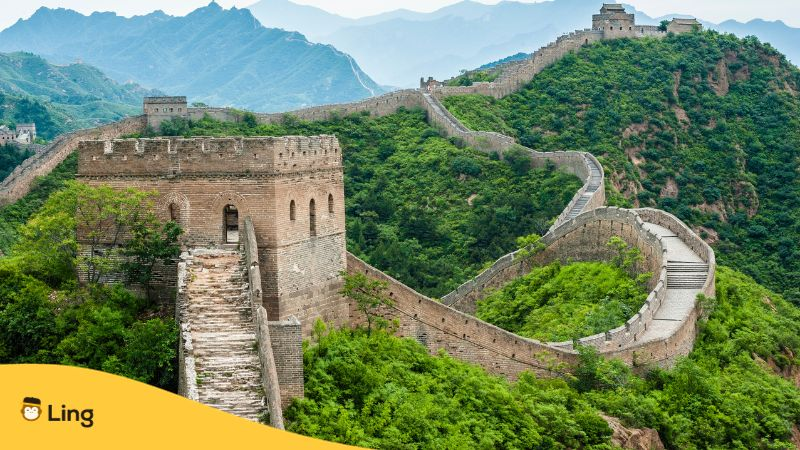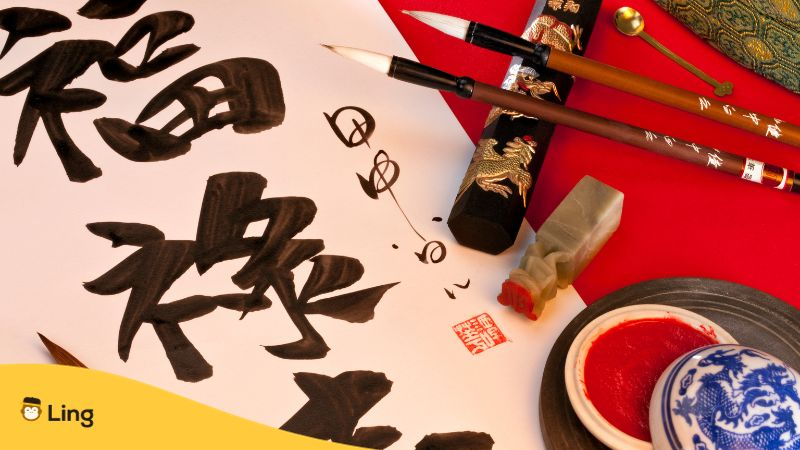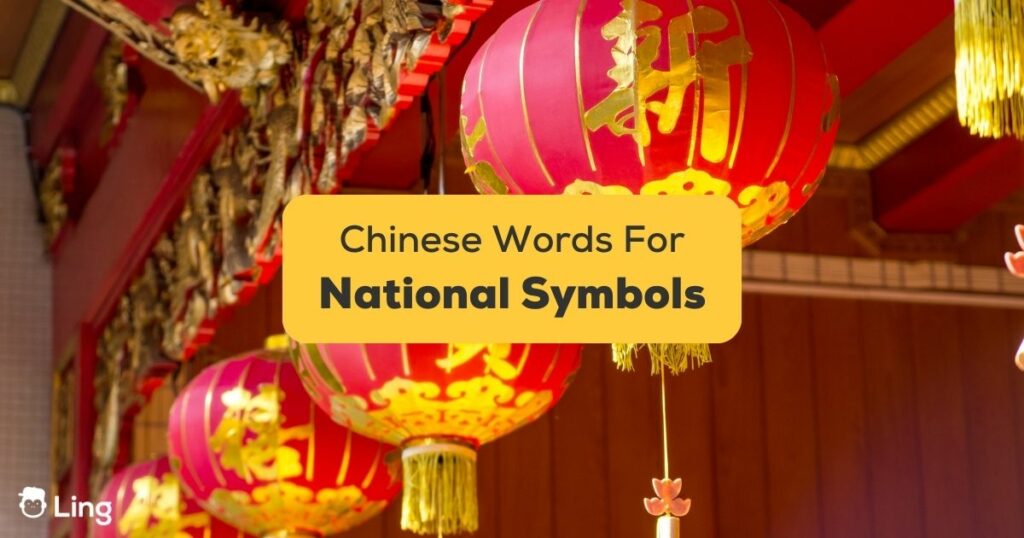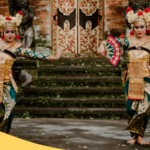Curious to know what amplifies China’s pride? Amaze your friends by knowing the Chinese words for national symbols, which shows your interest in China’s rich history and culture. These words are like magical keys that unlock the essence of a nation’s identity, sharing its stories, values, and dreams.
In this post, get a chance to connect with China’s soul, bridge cultures, and appreciate these symbols deeply cherished by the Chinese people. So dive into this linguistic adventure, and you’ll not only learn words but also discover the heart and soul of the Chinese nation!
The Significance Of Chinese National Symbols
For both tourists and residents of China, it is crucial to understand Chinese national symbols, or “国家象征” (Guóji xiàngzhng). These symbols have a significant cultural and historical importance that deepens one’s appreciation for the nation and its citizens. This information helps tourists cross cultural divides and engage in productive conversations. For instance, understanding the significance of the Chinese flag helps one successfully negotiate social and political circumstances. Similar insights into China’s history and ideals can be gained by understanding the meaning of the national anthem, “国歌” (Guóg), and the national flower, “国花” (Guóhuā).
For the locals, this understanding promotes cohesion, pride, and cultural preservation—especially in a society that is increasingly going global. Respecting Chinese national symbols ultimately encourages cross-cultural understanding, cultural appreciation, and national pride among visitors and locals.
Chinese Words For National Symbols
Flag Of China – 中国国旗 (Zhōngguó Guóqí)
The Chinese flag, sometimes referred to as the “Five-Star Red Flag,” has a red background and five golden stars in the top left corner. The four smaller stars stand in for the four socioeconomic classes that made up socialist China: the working class, the peasantry, the urban petite bourgeoisie, and the national bourgeoisie. The larger star represents the Chinese Communist Party.

Great Wall Of China – 中国的长城 (Zhōngguó De Chángchéng)
A historical representation of China’s rich cultural legacy and resilient spirit is the Great Wall of China. This famous fortification, which stretches across thousands of kilometers, was constructed over many years to defend China against outside attacks. It stands for China’s tenacity in defending its borders, as well as its outstanding achievements in architecture and engineering.
Giant Panda – 大熊猫 (Dà Xióngmāo)
As a beloved national emblem of China, the giant panda is frequently used as a metaphor for harmony and goodwill. The striking black and white fur pattern of this rare and endangered animal, which is native to China, is well known. The preservation of the giant panda has come to represent China’s dedication to safeguarding both its own natural heritage and the biodiversity of the entire world.

Chinese Dragon – 中国龙 (Zhōngguó Lóng)
Chinese dragons are a potent symbol with a long history in Chinese culture. These dragons are adored as benevolent beings linked to strength, wisdom, and good fortune, in contrast to the Western perception of them as destructive monsters. They are frequently represented as emblems of imperial authority in traditional Chinese art and during festivities.
The Forbidden City – 紫禁城 (Zǐjìnchéng)
From the Ming Dynasty to the end of the Qing Dynasty, the Forbidden City, also called the Imperial Palace, housed the Chinese emperor. This masterpiece of architecture is a monument to China’s rich history and culture and represents the importance of the emperor’s rule. It serves as a lasting reminder of China’s imperial heritage and the craftsmanship of its builders.

Terracotta Army – 兵马俑 (Bīngmǎyǒng)
The Terracotta Army is a group of thousands of life-size clay soldiers, horses, and chariots that were interred with Qin Shi Huang, China’s first emperor. A representation of China’s ancient history, workmanship, and emperor’s yearning for immortality, this archaeological treasure is awe-inspiring. It highlights the importance of the emperor in influencing the course of Chinese history as well as the country’s rich archaeological legacy.
National Emblem Of China – 中国国徽 (Zhōngguó Guóhuī)
The Chinese National Emblem shows Tiananmen Gate beneath the brilliant five-pointed star, surrounded by ears of grain, and with a cogwheel at its base. The five-pointed star on the Tiananmen Gate stands for the Communist Party of China, while the gate itself symbolizes the entry to the Forbidden City and the seat of government. The cogwheel and grain ear represent the agricultural and industrial sectors of China’s economy, respectively.

Chinese Calligraphy – 中国书法 (Zhōngguó Shūfǎ)
Chinese calligraphy, which captures the grace and beauty of the Chinese alphabet, is revered as a national symbol. The emphasis on precise brushwork, rhythm, and aesthetic harmony is a reflection of China’s rich literary and artistic past. Calligraphy serves as a vehicle for the expression of Chinese philosophy and culture, making it an enduring representation of aesthetic and intellectual success.
Other Chinese Words For National Symbols
Does it feel like your knowledge of Chinese national symbols vocabulary is still not enough? Relax, we have more words prepared for you below!
| English | Chinese | Pronunciation |
|---|---|---|
| Anthem | 国歌 | Guógē |
| Emblem | 徽 | Huī |
| National flower | 国花 | Guóhuā |
| National bird | 国鸟 | Guó niǎo |
| National animal | 国家动物 | Guójiā dòngwù |
| National tree | 国树 | Guó shù |
| Forbidden city | 紫禁城 | Zǐjìnchéng |
| Five starred red flag | 五星级红旗 | Wǔ xīng jí hóngqí |
| Majestic | 雄伟 | Xióngwěi |
| Pride | 自豪 | Zìháo |
| Valuable | 有价值的 | Yǒu jiàzhí de |
| Representation | 表示 | Biǎoshì |
| Precious | 宝贵的 | Bǎoguì de |
| Powerful | 强大的 | Qiángdà de |
Learn Chinese With Ling!
Did you get a glimpse of China’s culture with these cool national symbols of China? Are you interested in diving more into the Chinese language, society, and culture? Worry no more! With Ling, learning can be easy, effective, and fun!
Here’s the scoop on the Ling app’s awesome features: Dive into games, audio lessons, quizzes, puzzles, and engaging speaking and listening activities to supercharge your Chinese skills. Keep your motivation high with the built-in progress tracking tool – watch how far you’ve come and feel like a language rockstar! The Ling app goes above and beyond with AI and speech recognition tech, ensuring you sound like a native speaker in no time. Best of all, the app’s learning program won’t eat up your schedule – just 10 minutes a day is all it takes to start your Chinese adventure.
So what are you waiting for? Download the Ling app from the Google Play Store or App Store and start learning now!
































































